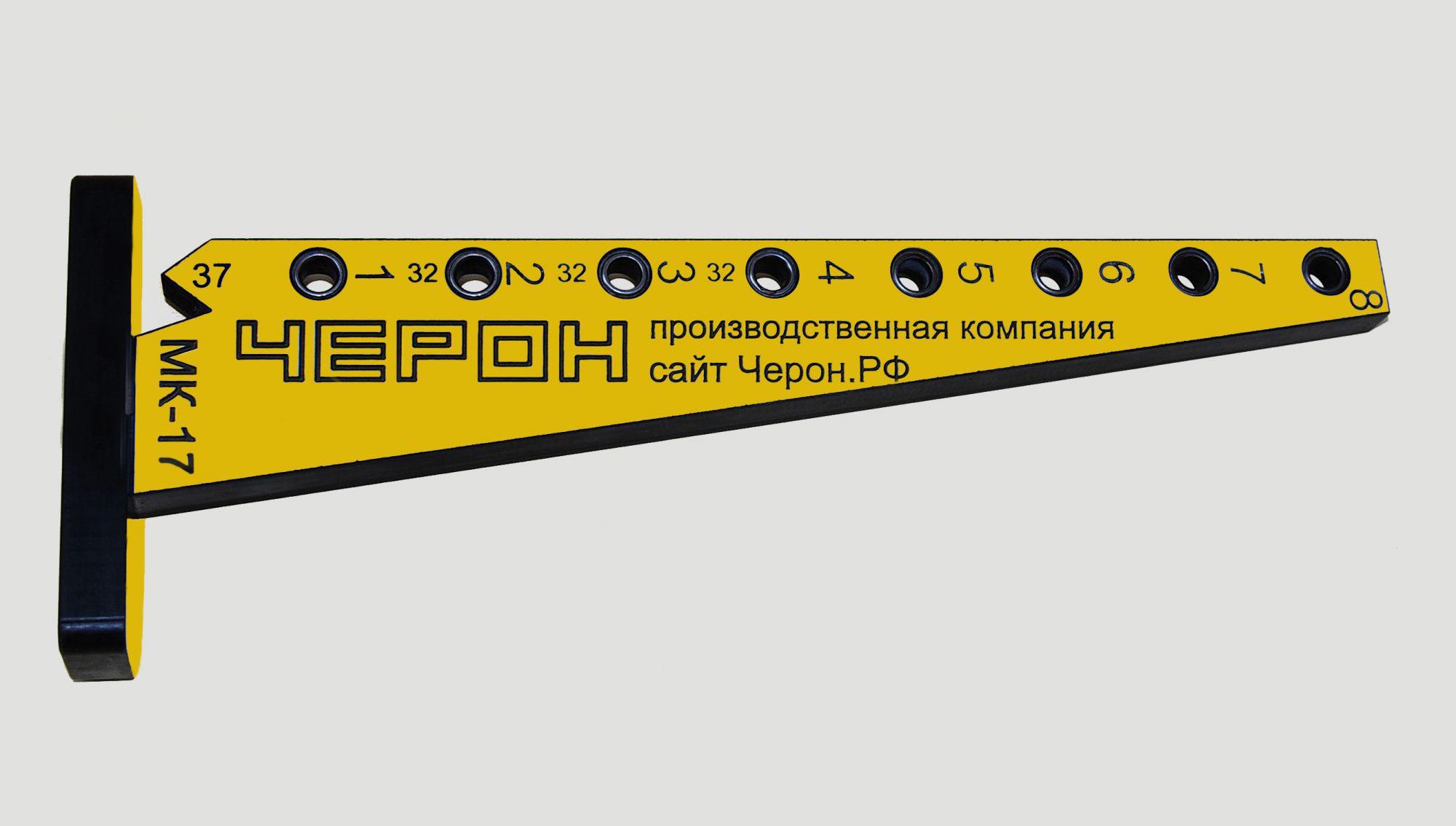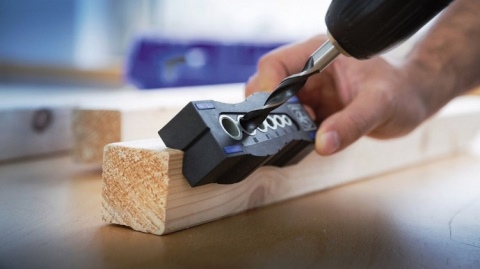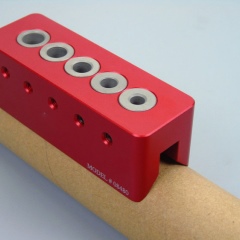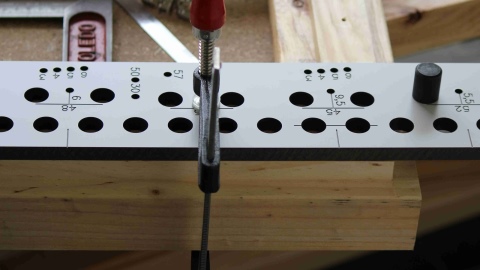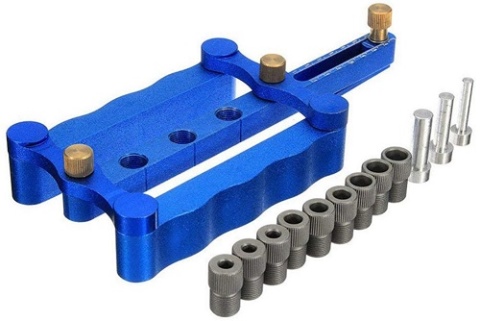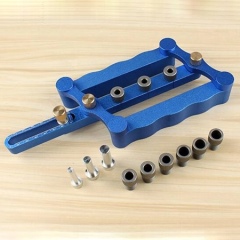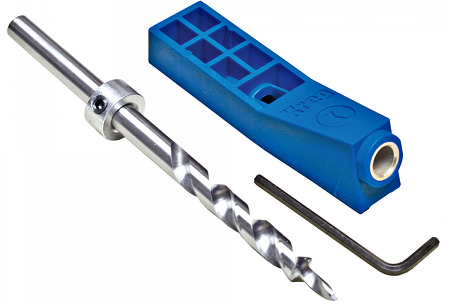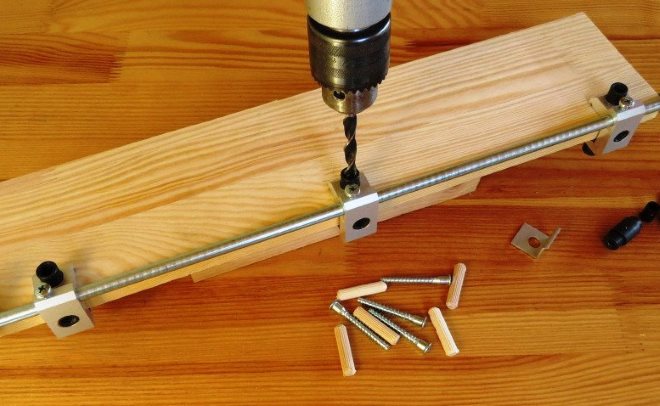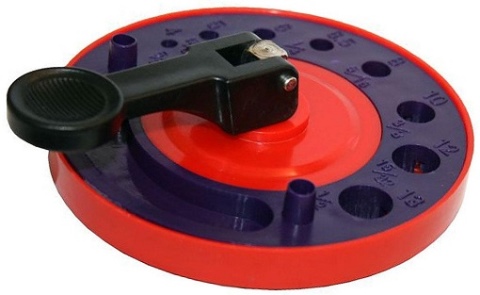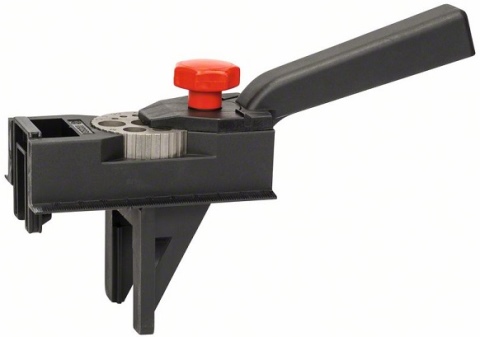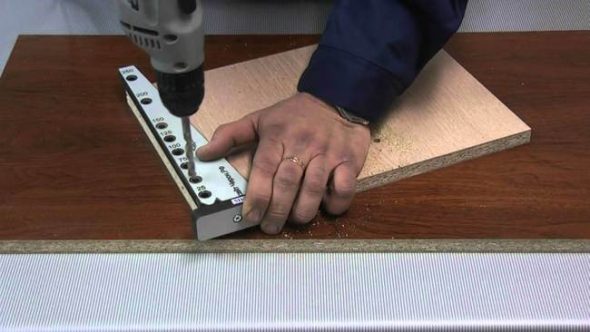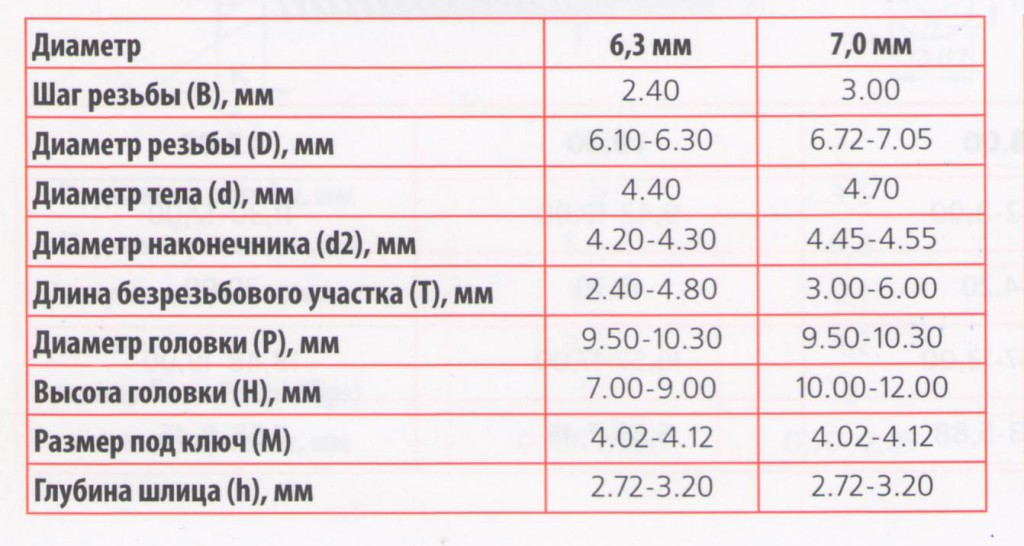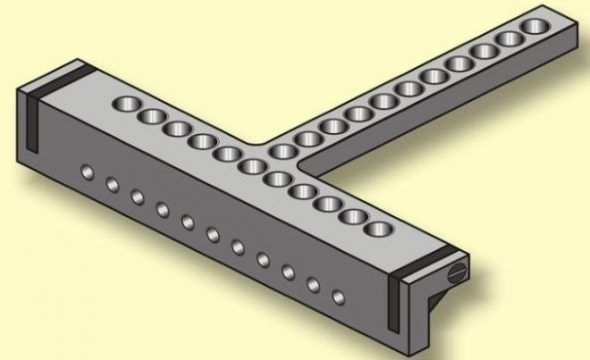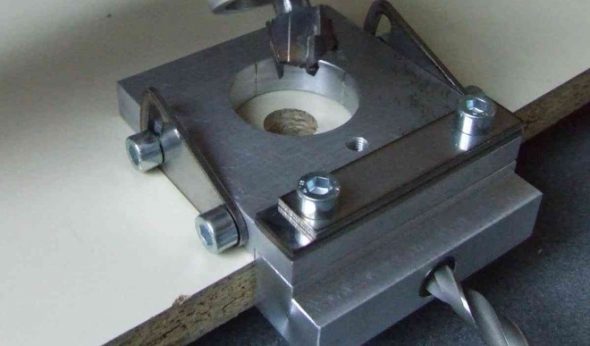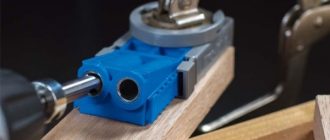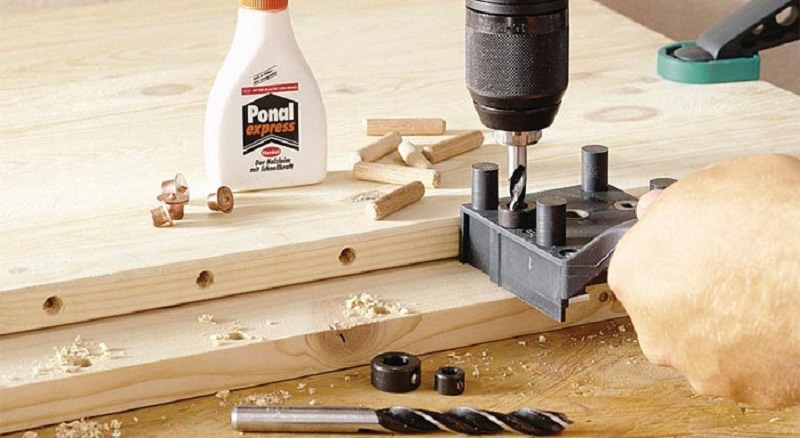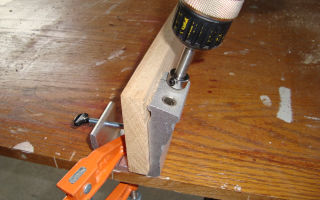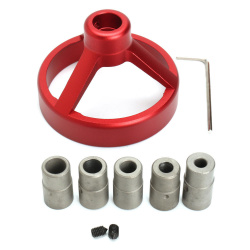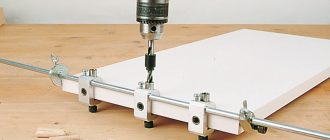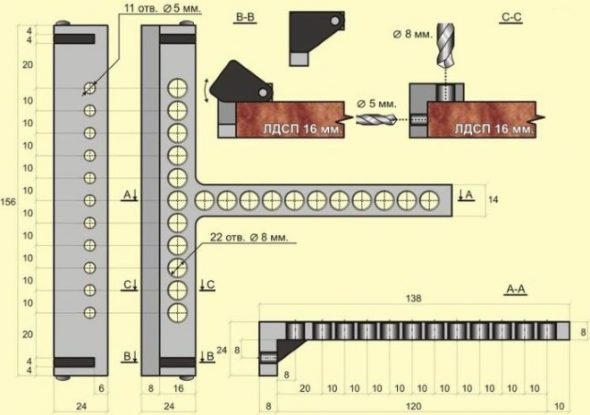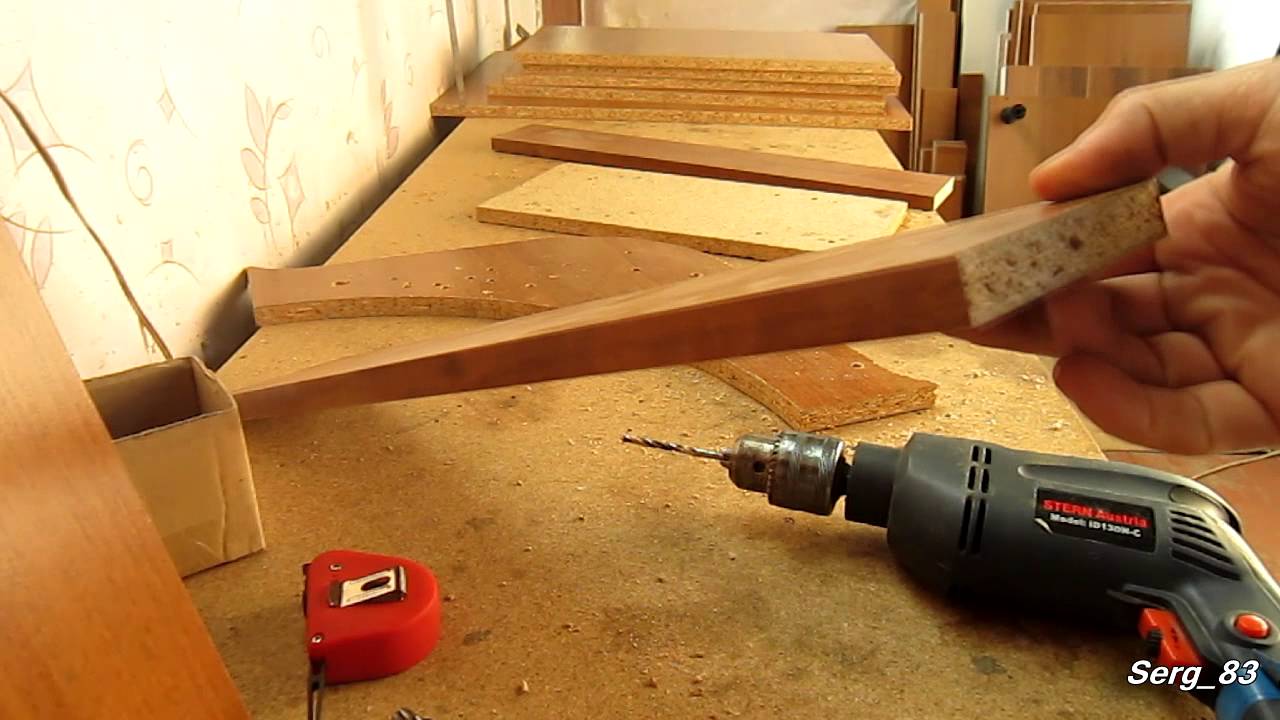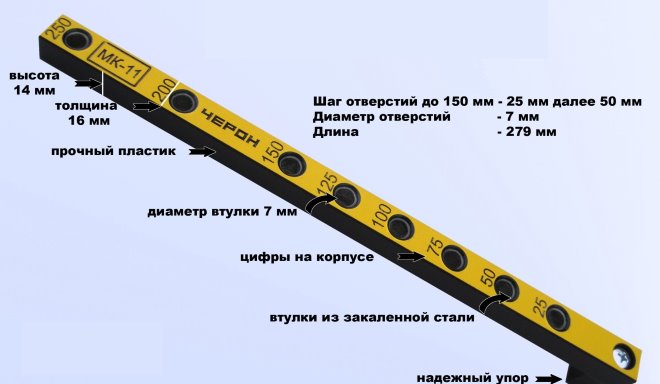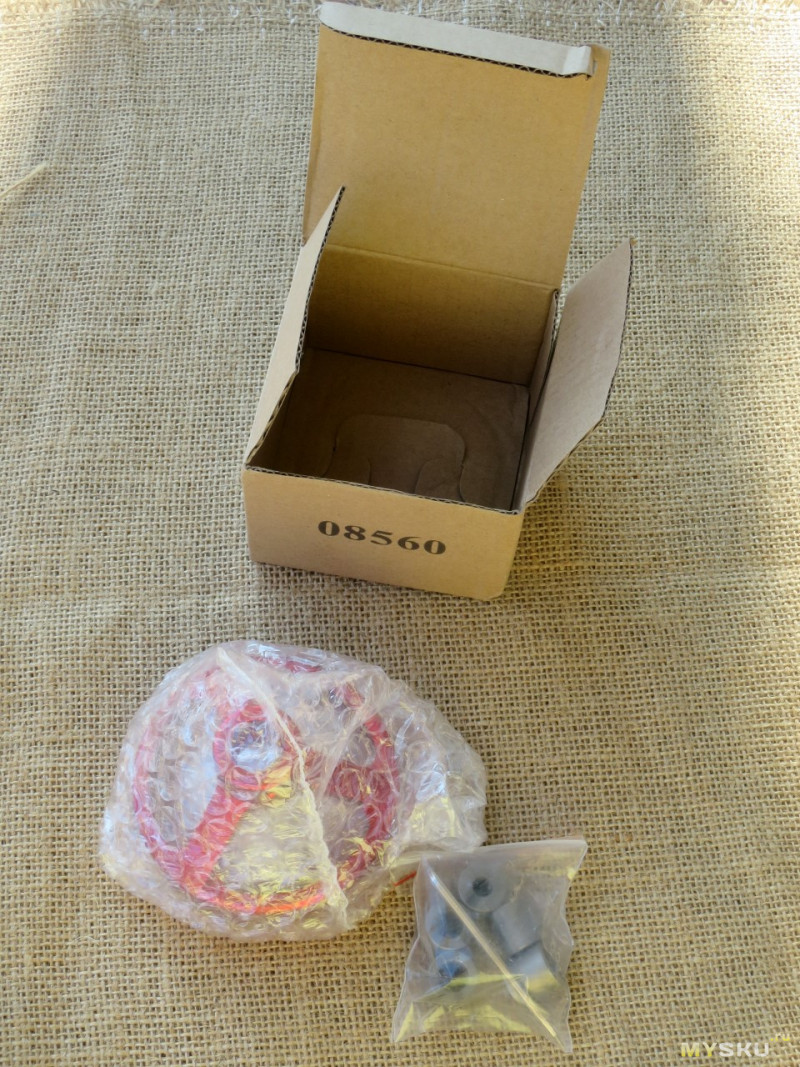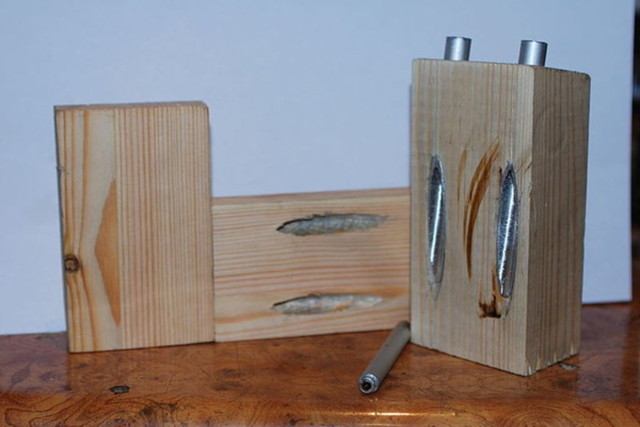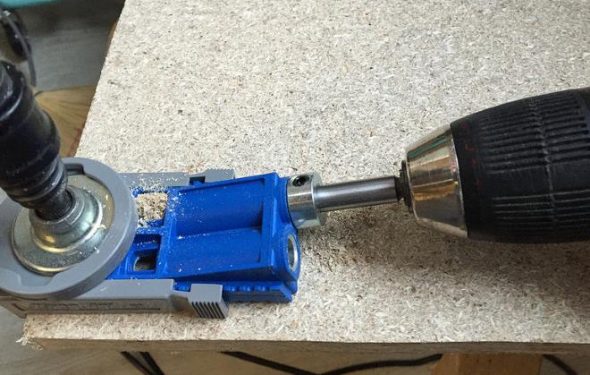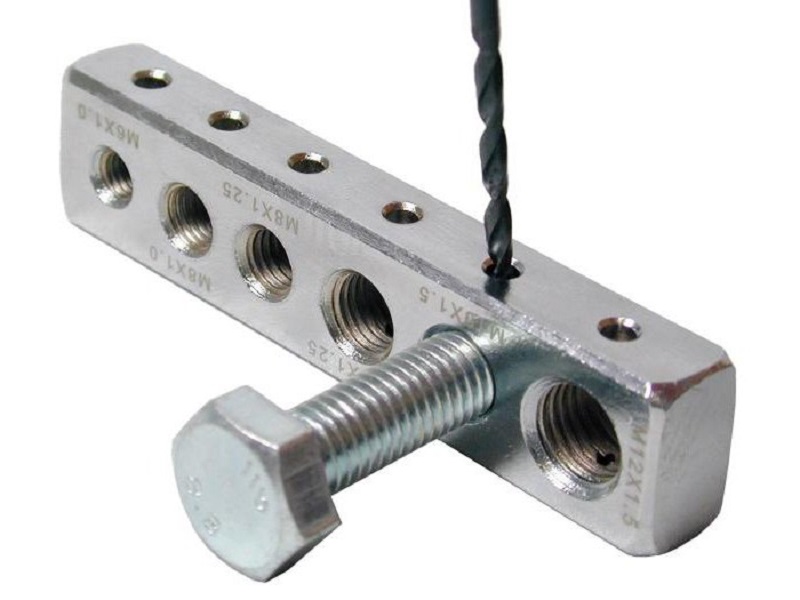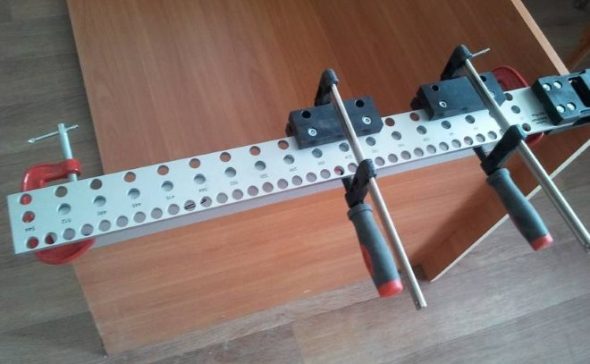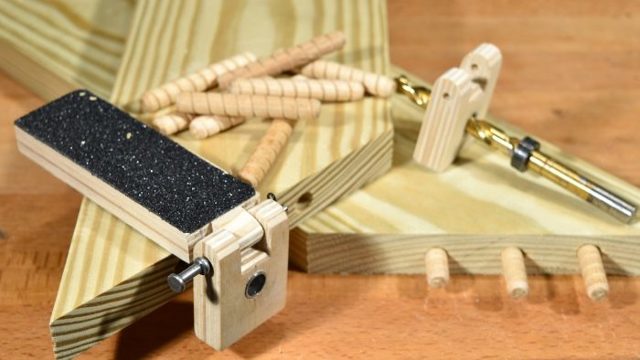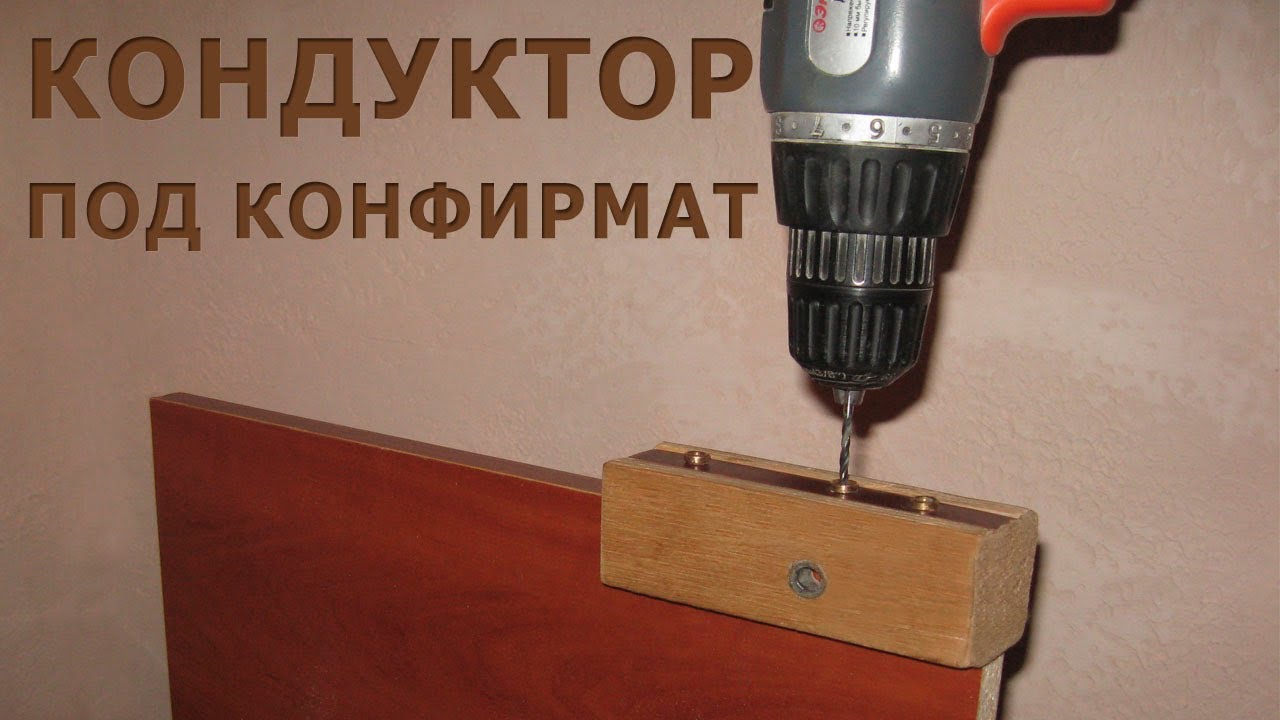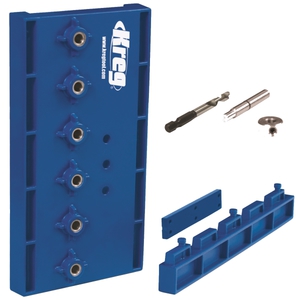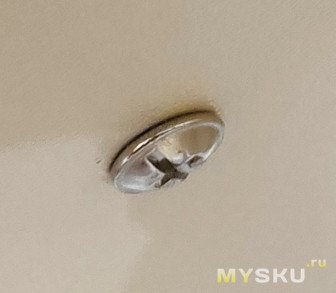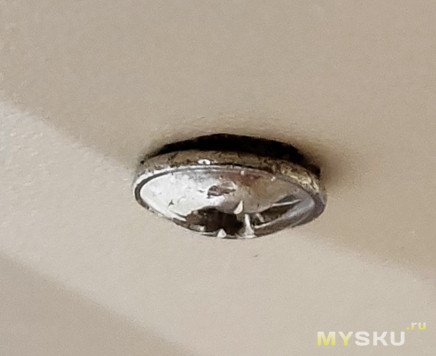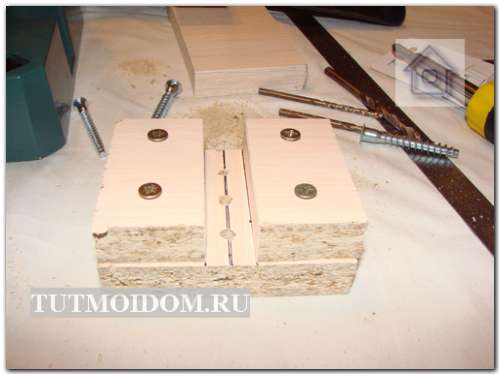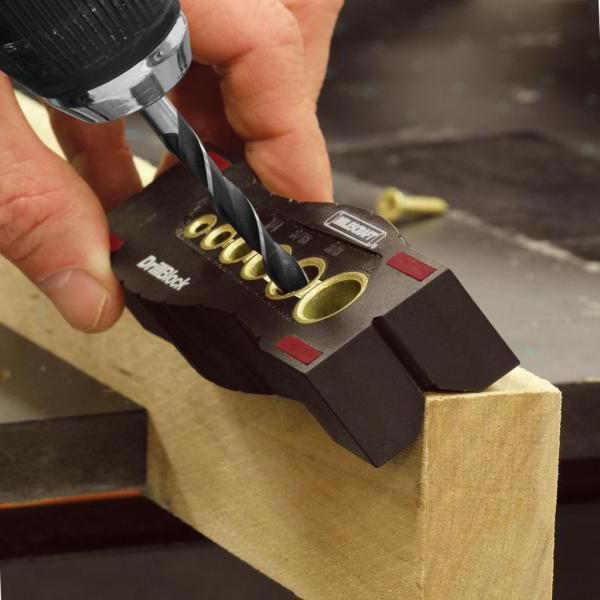Species overview
The modern industry produces a wide range of jigs: self-centering for precision drilling, for corner joints at 90 degrees, for creating end holes. For vertical or perpendicular drilling, strips with different diameters of inner sleeves are suitable. The oblique or rectangular joinery is well suited for woodworking or woodworking.
By appointment
According to the field of application, it is customary to categorize all conductors. For example, furniture or overhead options are suitable for chipboard, chipboard, boards, and other flat sheet materials. Separately, models are made for dowels - for drilling holes in the end face for protruding fastening elements, for a confirmation screw. For round pipes and cylindrical workpieces, rotary or universal options are used - they exclude the movement of the drill during operation. For sheet metal, flat workpieces, when attaching an aluminum profile, you can use a universal version or a special one for self-tapping screws.
When forming holes in tiles, porcelain stoneware, it is customary to use crowns - special drills. When working with them, it is better to immediately purchase a kit with a suitable conductor, so as not to experience difficulties with selection.

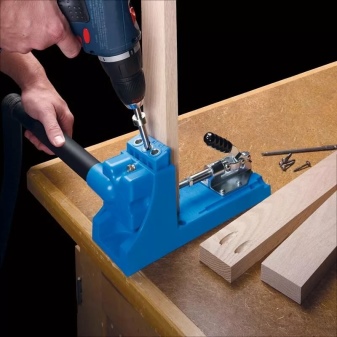
Diamond bits and drills are in demand when working with other hard materials: concrete, stone. Usually they are equipped with a water supply device to prevent overheating.
Installation of frames and socket boxes requires the use of additional devices. Most often these are simple patterns made of plexiglass or plywood, boards. They help to keep its contents inside the hole when sculpting and pouring mortar, mounting sheets, without losing the given geometry. By analogy, such elements are called conductors, although they do not participate in the drilling process. Usually they are used if you need to install 3-5 socket outlets in a row.
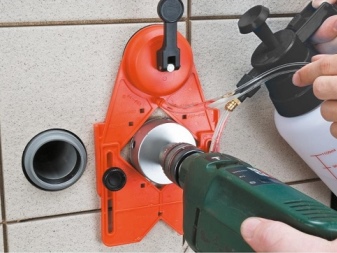

By design
The type of construction of the conductor largely determines its functionality. Among the types used by masters in different fields of activity, four of the most popular options can be distinguished.
Overhead. The jig in the process of work is in contact with a flat face with the surface of the material being drilled, it is pressed with clamps or hands. This variety is focused on work on the plane, it is often also called furniture. The best choice of a surface-mounted jig is when working with chipboard, MDF and other wood-based panels.

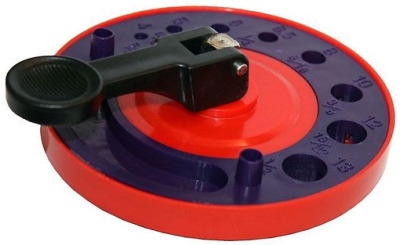
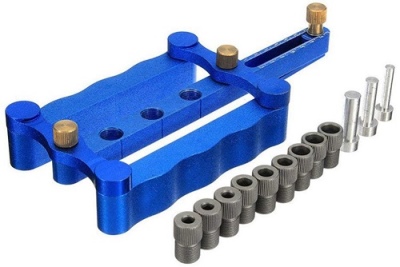
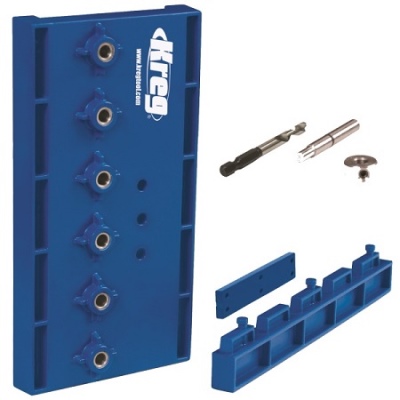
Popular models
PRACTICE 247-026

This is one of the simplest and most budgetary jigs, designed for drilling holes with a diameter of 4-10 mm. The tool is made of plastic, has a round shape with patterns of holes of different sizes around the circumference. There is a special rubber rim for collecting dust and chips. Buyers of this jig note its budget price and ease of use as an advantage. The main disadvantage is quick wear.
European bison 29853

The jig is designed for use with diamond tubular drills. Hole diameters - 4, 6, 8, 10 and 12 mm. There is a rubber suction cup as a retainer. Also, the tool is equipped with the possibility of forced water supply to avoid overheating.
Of the positive features, buyers note:
- Affordable price.
- Sufficiently secure fixation on ceramic surfaces.
- Drilling precision.
- Overheating insurance.
The main drawback of the device, like all conductors of the budget segment, is its quick wear. However, this is offset by an affordable price, which makes it possible to consider such tools rather as a replaceable consumable for repair work.
PRACTICE 771-411
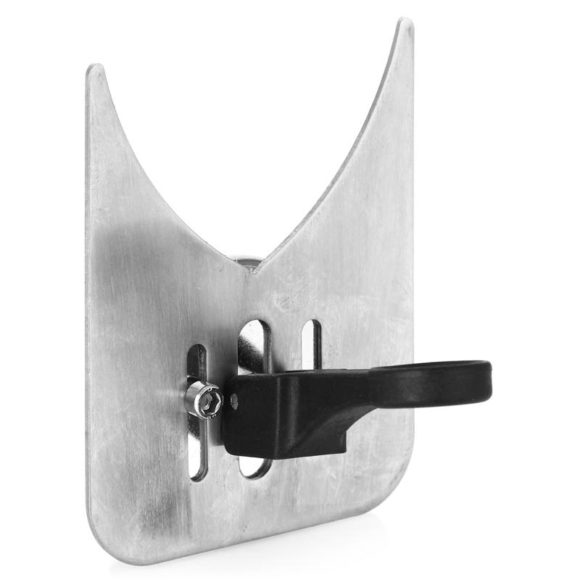
This tool belongs to the Expert series of the Russian company Praktika. It is used as a guide for diamond core bits from 14 to 70 mm in diameter. The jig is made of steel; a rubber suction cup acts as a fixture. According to the manufacturer, due to the design of the guide, the side layer of the diamond core bits does not wear out. This is confirmed by the buyers of this jig.
Kwb Dubelprofi, 7580-00
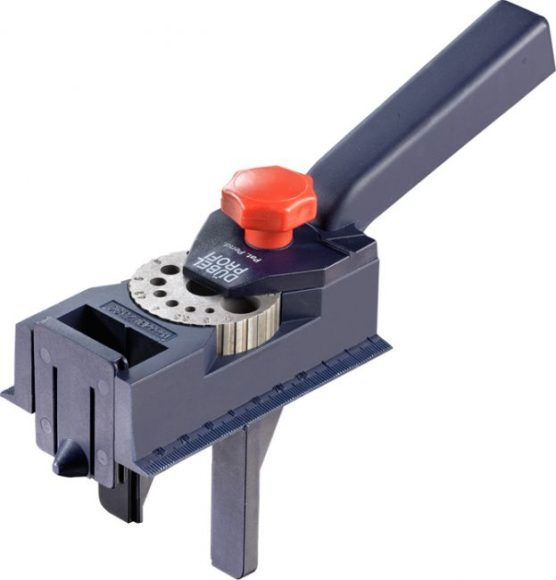
The tool made by the Czech company Kwb is more versatile. It is equipped with drilling templates for holes from 3 to 12 mm. The bar acts as a parallel stop. There is a depth gauge. Despite the presence of a stop bar, the owners speak of some difficulties with fixing the device. Nevertheless, the tool is popular due to its low price category and ergonomics of use. On the positive side, there is also good drilling accuracy.
Bosch 2607000549
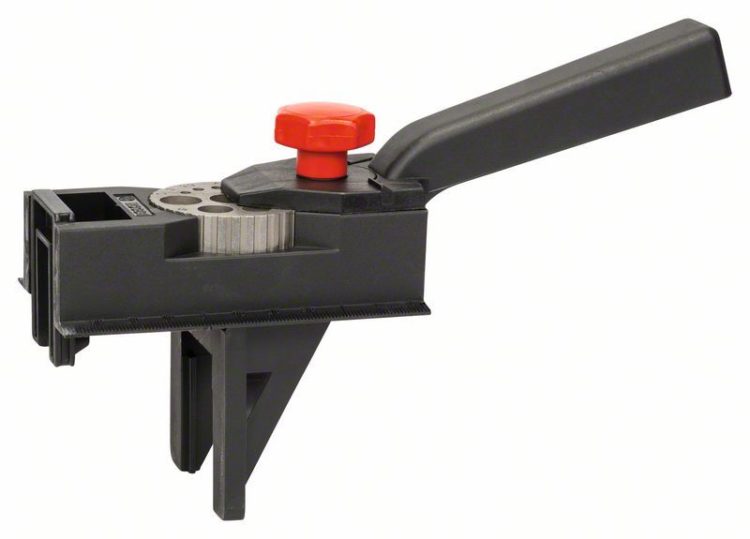
The jig is designed for drilling holes for dowels. The templates include the most common diameters from 3 to 12 mm. Designed for work on both wood and steel, therefore it belongs to the universal conductors. For fixing the tool is equipped with a stop with a clamping screw, as well as a handle for ease of use. In general, the reviews about this device are positive. Of the shortcomings, only plastic material is noted, which is prone to rapid wear.
Kreg K3DGB
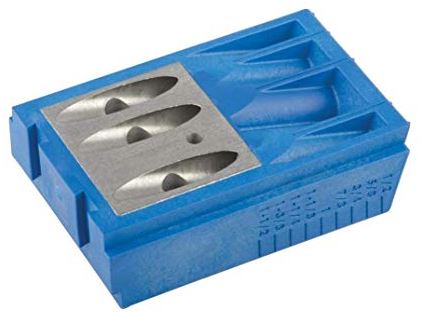
This is a more professional jig, which allows you to drill holes in large diameter parts. Replaceable attachment, sometimes used as part of the Kreg drilling kit. The design is designed for drilling both perpendicular and at an acute angle. The owners note the reliability of the device and the versatility of its use.
Kreg Kma3200
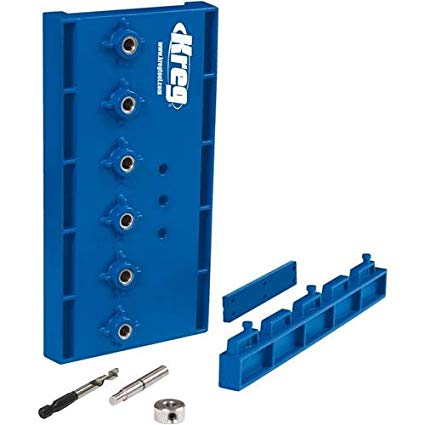
Surface-mounted jig designed for drilling vertical holes when assembling furniture, repairing, etc.
The set includes:
- The conductor himself.
- Clamp-clamp.
- Limiting ring.
- Positioning pin.
- Drill 1-1 / 4.
- Connecting strip.
Thus, in fact, this is a complete set for accurate and high-quality drilling. Also, the jig comes with a user manual for assembling and using the device. The tool has received positive reviews from customers, where it is mainly noted for its accuracy and reliability.
Classification of instruments
In terms of functionality and constructive functionality, the drilling jig is divided into types:
- waybills. The name comes from their functional way of working, that is, they are superimposed on the blank part or the work surface, attached to it with special clamps or held by hand. Such a device is suitable for drilling flat surfaces such as planks, MDF boards and chipboards. It is also called a furniture jig for drilling holes. Thanks to the use of a conductor, the holes themselves are very neat and verified;
- swivel. These templates are great for drilling round or cylindrical surfaces. Thanks to this design, the axis takes a horizontal, vertical and inclined position to the surface. This is possible thanks to the bushings that can guide the drilling line;
- universal. Means of this design are very popular in small industrial production, where quick adjustment to the existing surface is important. Due to their uniqueness, they are also in demand in the household when you have to work with different materials, planes and surfaces; tilting.In terms of functionality, they are somewhat universal. They are necessary when you need to make a hole in different planes and at different slopes. This is very convenient for carrying out some kind of repair work when you need to drill a hole in the wall without spending much time and at a specific angle;
- sliding. According to its name, such a jig does not have to be fixed to the surface where it is supposed to be applied. It should be noted the inconvenience of such a conductor in handling, since it requires constant hand holding;
- fixed. Unlike sliding conductors, they are attached to the place where they are intended to be used. It is much easier to fix them, but by virtue of their design, they limit the scope of a person's work. This can be clearly seen when working on walls or vertical planes with only one spindle.
Scope of use
Furniture conductors are devices that no furniture maker can do without during work. Such devices avoid the main problem in furniture production, namely, the entry of the drill at the wrong angle. If you make such a mistake, then it is very difficult or impossible to correct it later. Such a device not only makes it possible to correctly guide the drill during operation, but also allows the tool to constantly keep the desired path (even, perpendicular or at an angle).
Such devices are used both in the design and manufacture of furniture, and in assembly, when there is a need to make holes for attaching elements to each other. Often, for such actions, conductors are used for companies or dowels, without which it is impossible to make even holes.
Also, this device cannot be dispensed with if it is necessary to make holes at an angle or at the end of a thin plate (it is especially important to use the device when working with chipboard plates)
When drilling holes with this design, the process itself is quick and easy. The fasteners allow you to work at any distance from the edge of the slab, as well as regardless of its width.
In the furniture industry, dowels are very often used as fasteners. But at the same time, this option has already existed for a long time, and their use requires the mandatory presence of a drilling jig when working. The only condition and at the same time a problem is the factor that the parts to be joined together must have a right angle during operation. Therefore, such elements must be located exactly perpendicular to each other. When making holes for dowels and adding parts, it will be very difficult to do without a jig.
Furniture production is not the only area of application for such devices. They can often be used to make holes in pipes and other round parts. Special devices make it possible to make quality holes even in the smallest tubes.
Appointment
This device is required to guide the drill with high accuracy in the desired location, while ensuring straightness and accuracy of its passage through the entire depth of the hole. When working with a hand drill, it is quite difficult to maintain a given direction. If it is necessary to make a number of holes at a certain distance from each other, you have to make a marking for each of them. The furniture template has through holes for the drill entry, the places of which correspond to the product drawing.
In the absence of a conductor, it is necessary to resort to a more laborious method - nakernivanie marking lines. A punch is a depression on the surface when hitting a special cone called a punch with a hammer. When installing the jig over a given point, you can start working without punching. The drill will hit the desired point exactly and will not deviate from the specified direction.
The conductor is used at the stage of assembly, fastening of fittings and during other technological operations. If it is necessary to make several rows of holes in a pattern, the jig saves a lot of time. An almost irreplaceable jig is when the holes are planned in a rounded shape. When pressed, the end of the drill jumps off from the location indicated in the drawing. The jig is fixed on the part and performs the job precisely.
Metal structures are used for almost any furniture except wood. Often they are pipes through which a series of holes must be drilled.
In this case, during the manufacture of the conductor, special attention should be paid to its reliable fastening to a metal pipe. Generally, the drilling angle should be 90˚
A rarer and more difficult option is oblique drilling. In this case, you should adjust the length of the fixing elements. Drilling tangentially is impossible just by holding the drill in your hands. Working with a furniture jig makes this process a breeze. The height should be set. In this case, the workpiece is tightly pressed against the stop. The holes are accurate and at the desired angle.
A significant advantage of using a template guide for furniture products is that the holes are coaxial. When using a conductor, there is no need to make calculations and mark holes for holes. This reduces labor intensity and reduces work time.
Even a simple device in the form of a bar with an emphasis greatly facilitates and speeds up the process of making holes of the same type.
Basic types
By the type of design and functionality, the fixtures used to add (drill) holes in furniture elements can fall into one of the following categories.
Overhead
These are jigs that are applied to the surface of the workpiece and either fixed on it or held in a given position by hand. Using such a device for the manufacture of furniture, holes are made in flat parts (for example, in plates made of chipboard or MDF).
Swivel
The working bar of such conductors can rotate both horizontally and vertically. Using this device, you can make holes in parts of complex geometric shapes. Such a jig is used for drilling holes, the axis of which is at an angle.
Universal
These are reusable jigs for making furniture. It is advisable to use devices of this type in production workshops that produce furniture in small batches. The versatility possessed by such jigs for furniture production lies in the fact that they can be quickly reconfigured for various combinations of hole patterns.
Tilting
Conductors of this type are used in cases where it is necessary to drill holes in several planes.
In addition, more highly specialized jig devices are actively used in furniture production (in particular, a dowel jig for assembling furniture and a device that allows you to accurately and efficiently make holes for confirmations).
Using a jig when drilling the end face of furniture boards will protect you from accidental drift of the drill to the side and, as a result, damage to the workpiece.
According to the method of fixation on the surface of the workpiece, the conductors are divided into devices of the sliding and fixed type. The devices that are fixed on the part before starting its processing, although they are more convenient to use, somewhat limit the freedom of the craftsman. This is especially critical when drilling is performed on a machine equipped with a single spindle mechanism.
Using a jig, it is possible to avoid a rather serious problem: the entry of the drill into the surface of the workpiece at the wrong angle. It is quite difficult to cope with this problem, if it has already arisen, and in many cases it is simply impossible. When using a jig, the drill not only enters the workpiece at the required angle, but also does not deviate from the specified direction throughout the entire drilling process. A jig is indispensable in cases where it is necessary to drill a hole at a certain angle in thin furniture boards made of chipboard or MDF.
Some drilling operations (for example, making oblique holes) simply cannot be done without special tools.
Even a person who is not highly qualified and does not have sufficient experience in this area can set up the production of furniture with his own hands, if conductors are used in such production. When using such devices, there is no need to perform complex preliminary calculations and engage in marking places for future holes.
Advantages and disadvantages
According to its functional purpose, the jig acts as a template according to which it is necessary to drill a hole in the required material with maximum accuracy to the original. Such a template greatly facilitates the work of the master when it is necessary to drill a strictly vertical, horizontal or inclined hole.
The master no longer needs to make sketches, measurements, having such a tool with him. The drill is located strictly at the required angle, which is necessary in the process of work and will not be able to deviate. This improves the accuracy of the work, which can be seen in the example of deep holes.
To work with furniture, the conductor must meet the following requirements:
- he must help and speed up the process of assembling furniture, not require the use of complex equipment;
- allow you to make several holes at once without the need to apply manual markings;
- improve work with a drill;
The materials from which the conductors are made have different strength characteristics. These are mainly plastic and glass from organic materials. But the most durable are obtained from metals, namely steel. Therefore, when choosing, you should pay attention to the following characteristics:
- minimal deformation at high loads;
- clear axis of direction of the drill;
- lack of heating during operation.
In the furniture industry, lighter conductors are used that are easy to use. Factory or homemade options can be used.
It should be noted that a real master has a trained eye, so often all these devices are not needed to make the hole correct.
A clear advantage of such tools is ease of use. With their help, even an inexperienced person can do all the work at the level of a skilled worker. Here you don't even need to do some complicated calculations and have colossal experience. Its main purpose is to speed up the work process many times over.
Application
The drilling jig is used in many fields of activity. Most often in construction. But in addition to this, there are several other important industries.
Furniture
During assembly, many craftsmen are faced with a problem such as a lack of holes. In this case, you have to make new ones yourself. To do this with ease, it is recommended to use a conductor. With its help, all work will be done quickly, efficiently and accurately. Also, it is necessary to resort to the help of such a device for masters who do not have a special machine.
Modern assembly is distinguished by a wide selection of furniture fittings and various fasteners. All of this requires precise alignment with no offsets. This is where the conductor will help.

Pipes
It is quite difficult to make holes of the correct shape on cylindrical surfaces. It is useless to use a drill in this case.It will constantly slide off, which means that they will all turn out to be of an irregular shape. For this, it is recommended to use a conductor.
Additionally, you can use devices that help you make perpendicular holes. It will also help you to process rounded elements and edges.
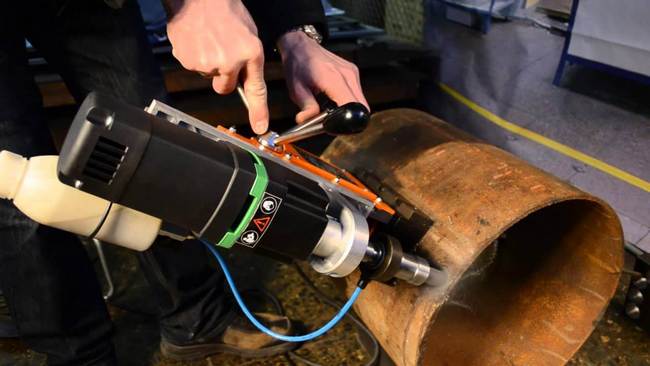
How to choose
Do you use a jig for drilling in your work?
I want to try
When choosing a marker for drilling, it is recommended to pay attention to the following points:
As a rule, cheap conductors are made of plastic. However, this is an unreliable material that quickly wears down and wears out. Therefore, it is recommended to buy a device with steel sleeves.
Appointment
How highly specialized is the tool. You should focus on what kind of work the conductor will be used for.
This moment is closely related to purpose. If furniture assembly work will be carried out, you may need both an invoice and a sliding tool - depending on the specific stage of assembly.
Retainer type
Clamp or suction cup. For construction work on a vertical plane, a rubber suction cup is more suitable, which allows you to move the scriber to any desired location.
Expert opinion
Torsunov Pavel Maksimovich
You should also focus on the reputation and name of the manufacturer. For example, the Russian company "Praktika" has gained popularity, which produces conductors of both a universal type and highly specialized ones. Also popular are markers from well-known world suppliers of tools - Bosch, Kreg, and others.
Features of self-production
When designing a conductor for a confirmation, it is necessary to correctly calculate what functions it will have to perform in the future. It needs to be done under the most commonly used fasteners in the house. If such a device is required by furniture makers for permanent work, then it is better to buy a factory sample, which is highly accurate. In addition, manufacturers often include additional fasteners, stops and templates in the kit.
The price of such a device for professional use ranges from 400 to 1100 rubles. It depends on the direct capabilities of a particular unit, the number of holes to be made, their length, and so on. Many are interested in how to make a furniture conductor with their own hands. Dimensioned drawings are a must for novice craftsmen, since they allow you to make a high-quality design on the first try. Similar schemes can be found on the Internet.
Basically, the conductor has the following elements:
- The basis of the product. It is directly applied to the plane of the furniture, on which holes will be drilled.
- Guide bushings. A drill goes through them.
- Surface clamping parts. As a rule, they are located at the end of the conductor.
Next, you need to take care of the correct direction of the sleeve. It can be made from stainless steel pipe. The length of the sleeve must be at least twice as long as the hole in which it will be located at the corner. The bushing in the hole should be tight. The simplest and most common option is a shaft fit. A corresponding hole is drilled in the corner under the already known diameter of the bushing, and after that the fit is made. A low interference fit is recommended.
There are times when the jig needs to be made for drilling deep holes. Then the sleeve is made with a shoulder. The number of possible holes, their length and the distance between them are selected for the specific needs of each master.
Several options can be used to attach the device:
- Spring stop. The conductor will snuggle against the material being processed using a spring force. For these purposes, you can use any flat spring with the required force.
- Fastening to a tree with self-tapping screws. With this method, the jig is pressed and held on the working surface due to the frictional force. This method of fastening allows you to use the resulting marks for the subsequent centering of the part. When working with chipboard, you need to use this method with great care.
- Clamps with rubber gaskets. This method is dangerous due to possible displacement of the hub axis. This happens because the weight of the conductor increases, and the bushings give in to bending. Therefore, you must first attach the jig to the surface, mark the future hole, and then start drilling.




